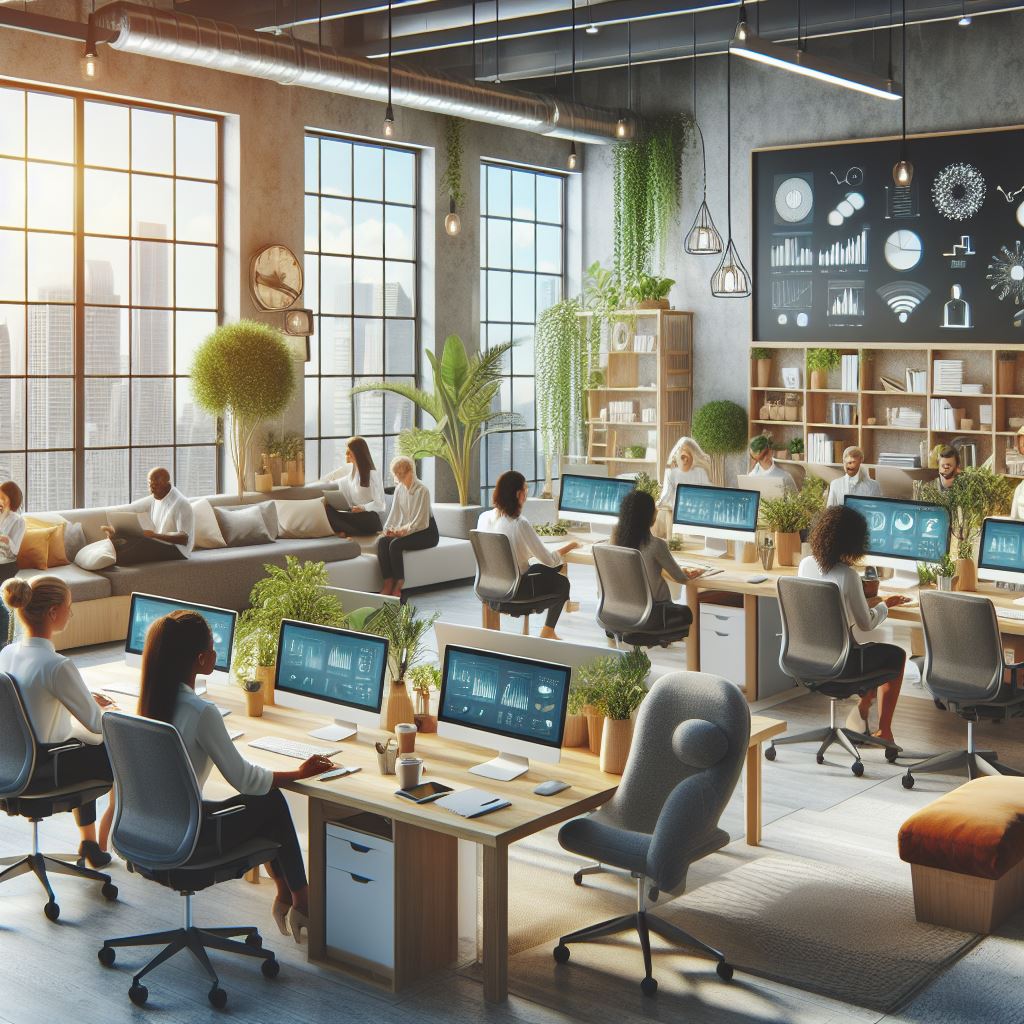How to Design a Hybrid Workplace for More Productivity
In the wake of evolving work dynamics, the concept of hybrid workplaces has gained significant traction. With businesses adapting to flexible working arrangements, designing a workspace that seamlessly blends physical and virtual environments has become imperative. As a leading turnkey interior designing company, Two Square is committed to enhancing productivity through innovative workplace designs. In this blog post, we delve into the intricacies of hybrid office design, shedding light on its importance, key elements, and implementation strategies.
What exactly is hybrid office design?
A hybrid office design encompasses a flexible work environment that accommodates both remote and in-office employees. It integrates physical office space with virtual collaboration tools to facilitate seamless communication and collaboration irrespective of location. This approach acknowledges the diverse needs of modern workforce, offering flexibility without compromising productivity.
Factors driving hybrid working
Several factors are driving the shift towards hybrid working models. These include:
- Changing Work Preferences: Employees increasingly seek a balance between remote work and in-office collaboration.
- Technological Advancements: Advances in technology have made remote work more viable and efficient.
- Cost Optimization: Hybrid workplaces allow businesses to optimize real estate costs while retaining a physical presence for collaboration.
- Employee Well-being: Flexibility in work arrangements can enhance employee satisfaction and well-being.
The Importance of a Well-Designed Hybrid Workplace
A well-designed hybrid workplace goes beyond aesthetics; it is tailored to support productivity, collaboration, and employee satisfaction. By creating an environment that fosters seamless interaction and workflow regardless of physical location, businesses can unlock their full potential.
Assessing Your Needs
Before embarking on the design journey, it’s crucial to assess your organization’s specific needs and goals. Consider factors such as team dynamics, communication requirements, and technological infrastructure to tailor the hybrid workplace design accordingly.
Key Design Elements for a Hybrid Workplace
– Physical Office Space
The physical office space serves as a hub for collaboration and social interaction. Embrace open layouts, flexible seating arrangements, and designated collaboration zones to encourage teamwork and creativity.
– Virtual Workspace
Invest in robust virtual collaboration tools and technologies to bridge the gap between remote and in-office employees. Seamless integration of video conferencing, messaging platforms, and project management tools is essential for effective communication and collaboration.
– Cultural Elements
Infuse the workspace with elements that reflect your company culture and values. Whether it’s through branding, decor, or amenities, create an environment that fosters a sense of belonging and camaraderie among employees, regardless of their physical location.
Essential Technologies for a Hybrid Workplace
Ensure that your hybrid workplace is equipped with essential technologies to support remote collaboration and productivity. This includes high-speed internet connectivity, video conferencing facilities, cloud-based storage solutions, and cybersecurity measures to safeguard sensitive data.
Legal and Compliance Aspects
Navigate legal and compliance considerations associated with hybrid working models, such as data privacy regulations, remote work policies, and health and safety guidelines. Collaborate with legal experts to ensure compliance and mitigate potential risks.
Implementing the Hybrid Workplace
Collaborate with best office interior designers to bring your hybrid workplace vision to life. From conceptualization to execution, leverage their expertise to create a workspace that optimizes productivity, fosters collaboration, and reflects your organizational culture.
Monitoring and Adapting
Continuously monitor the performance and feedback of your hybrid workplace to identify areas for improvement. Stay agile and adaptable, making necessary adjustments to enhance the overall experience for employees and optimize productivity.
Conclusion
In conclusion, designing a hybrid workplace is not just about blending physical and virtual elements; it’s about creating an environment that empowers employees to thrive, irrespective of their location. By prioritizing factors such as collaboration, flexibility, and technology, businesses can cultivate a culture of innovation and productivity in the hybrid era. Partner with Two Square to embark on this transformative journey towards a more productive and agile workspace.


